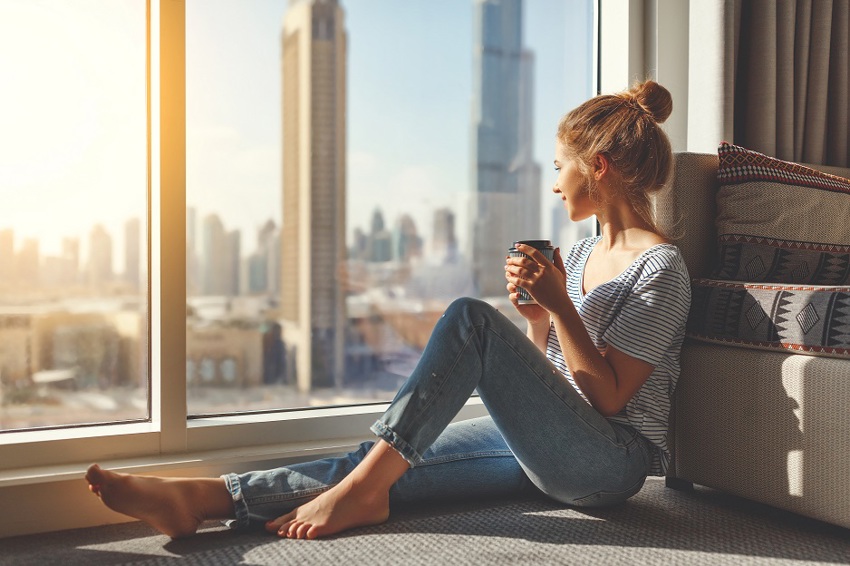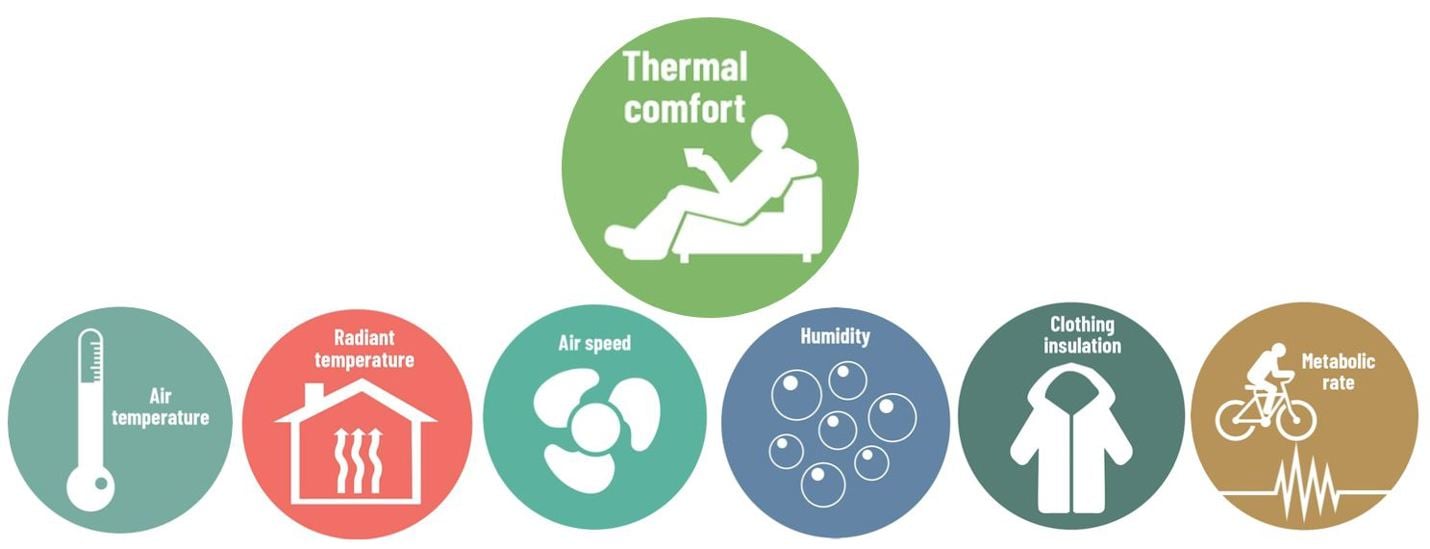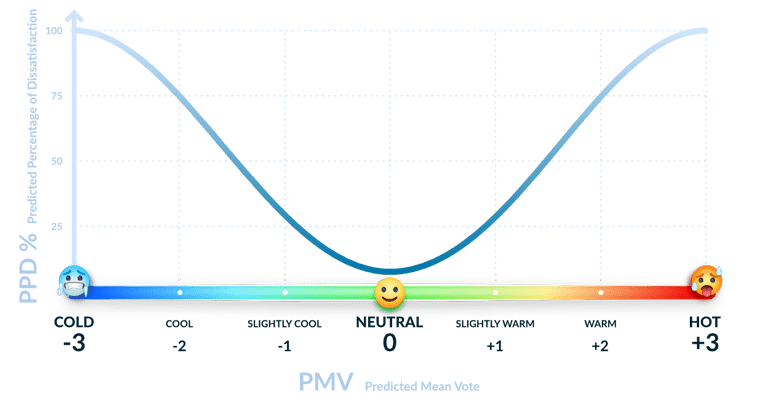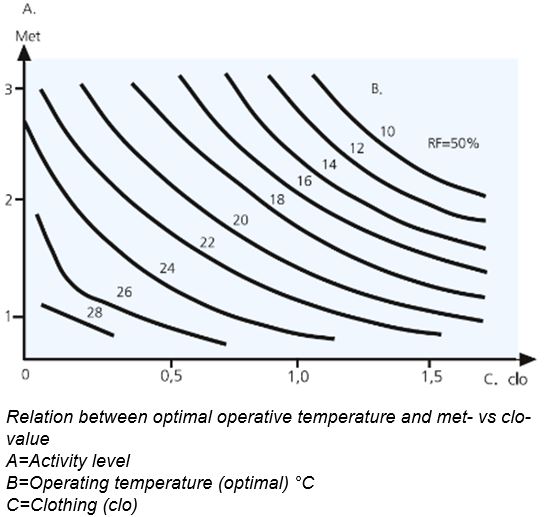Feeling the comfort
The term 'thermal comfort' describes a person's state of mind regarding whether they feel too hot or too cold. The question is: can we feel or see comfort? And can we also adapt to the comfort of the environment?
Comfort is subjective
Comfort is influenced by personal preferences, experiences, and individual perceptions, and especially by the surrounding environments. What one person finds comfortable, another person may find uncomfortable.
However, certain factors also contribute to a sense of comfort for many people. These factors are often rooted in basic human needs and physiological responses.
- Physical comfort & environment — based on physical factors like temperature, humidity, lighting and indoor environment quality, as mentioned above.
- Safety & security — a sense of feeling safe and secure in a person's surrounding environment.
- Familiarity & routine — as they provide a sense of predictability and control.
- Social connection & community — creating a sense of belonging and having support.
- Emotional well-being — such as emotional stability, reduced stress and a sense of fullfillment and purpose.
The overall sense of comfort is subjective and can vary significantly. However, it is essential to recognize and respect the diversity of comfort preferences and consider individual factors when discussing comfort.

Thermal comfort in buildings
Can you measure thermal comfort in the building? Or can you feel it? And can you see it? Thus, thermal comfort is difficult to define because it is based on various environmental, work-related and personal factors when deciding what makes a comfortable indoor temperature.
Thermal comfort is basically describing a thermal environment that satisfies most people in the environment. Thermal comfort is not measured by room temperature but by the number of people complaining of thermal discomfort. When people feel uncomfortable in their environments, they may behave and feel unsafe. Also, people's ability to concentrate may start to drop off, which increases the risk of errors.
There are six factors indicating thermal comfort in buildings. However, thermal comfort should always be considered in relation to the following factors.
Personal (physiological) factors — based on the occupant's characteristics.
Environmental (physical) factors — based on conditions of the thermal environment.
Six factors indicating thermal comfort


Thermal comfort is subjective and can vary from person to person.
Perceived, predicted & satisfied
The predicted percentage dissatisfied model was developed by Fanger (1967). He hypothesized that human thermal comfort was based on one's skin temperature and sweat secretion and that one could only be considered 'comfortable' if these two factors were balanced within a narrow range of acceptability.
The predictive mean vote (PMV) is an index that aims to predict the mean value of votes of a group of occupants on a seven-point thermal sensation scale.
Within the PMV index, -3 translates as too cold, while +3 translates as too hot, as shown below.
The predicted percentage of dissatisfied (PPD) is an index that predicts the proportion of thermally dissatisfied people who feel too cold or too hot. It is calculated based on the PMV.
The PMV and PPD forms are closely related, and both indexes take the form of a U-shaped ratio, where percent dissatisfaction increases for PMV values above and below zero (thermally neutral).
At the neutral temperature defined by the PMV index, PPD indicates that 5% of users are always dissatisfied with the thermal environment. At least 80% satisfied, this value is considered by science to be an index to strive for in an acceptable indoor climate.

The thermal model stands among the most recognized thermal comfort models. It was developed using principles of heat balance and experimental data collected in a controlled climate chamber under steady-state conditions.
Thermal comfort calculations in accordance with the ANSI/ASHRAE Standard 55, the ISO 7730 Standard and the EN 16798-1 Standards.
"Thermal comfort is the condition of mind that expresses satisfaction with the thermal environment and is assessed by subjective evaluation."
— ANSI/ASHRAE Standard 55
Watch: Visualising the Invisible — Comfort
Lecturers: Mikael Börjesson & Åsa Norén-Lundh
Webinar recording from Swegon Air Academy, 2022.
In this video, you will learn about comfort indoors, what are thermal comfort and indoor thermal quality, what factors impact the comfort of a room, other influencing factors, and more:
- How does comfort refer to how we feel in indoor environments by encompassing temperature, humidity and air speed?
- Why is it also referred to as thermal comfort or indoor thermal quality?
- What factors impact the comfort of a room, including temperature and the relative humidity in a building?
- What external factors need to be considered with comfort?

Thermal comfort as a 'condition of mind'. So, can we 'adapt our minds'?
Can you adapt to the thermal environment?
People adapt their behaviour to cope with their thermal environment, i.e. adding or removing clothing, unconscious changes in posture, choice of heating, moving to or away from cooling/heat sources, drinking more fluids, etc.
Where possible, people should be able to manage the workplace temperatures to allow the chance to adapt, that is, managing the indoor temperature, controlling adequate ventilation or air conditioning, and, in some cases, windows that can be easily opened or closed.
The problems arise when this choice (to adapt) is removed, and people can no longer adapt. In some instances, the environment within which people work is a product of the processes of doing their jobs, so they cannot adapt to their environment.
What is the next?
Adapted versus not-adapted?
Occupants versus visitors
Adapted people are considered those who entered a room and are already acclimatized to the situation in the room, i.e. approximately 15 minutes after entering a room. Visitors are people who have just entered a room and are assessing the situation in the room at the moment of entering.
Should adaptative comfort criteria be adopted?
A clothing insulation value corresponding to the local clothing habits and climate shall be used to determine the acceptable range of operative temperature.
In warm or cold environments, there can often be an influence due to adaptation. Apart from clothing, other forms of adaptation, such as body posture and decreased activity, which are difficult to quantify, can result in the acceptance of higher indoor temperatures.
People who used to work and live in warm climates can more easily accept and maintain a higher work performance in hot environments than those living in colder climates.
Occupant-controlled or ventilation-controlled?
Extended acceptable environments may be applied for occupant-controlled, naturally conditioned, spaces in warm climate regions or during warm periods, where the thermal conditions of the space are regulated primarily by the occupants through the opening and closing of windows.
But what about the buildings controlled by means of mechanical ventilation? Could variable ventilation modes bring a more comfortable indoor thermal environment than the fixed one? Adaptive thermal comfort could also reduce the energy consumption of heating, cooling, and ventilation systems in buildings.
Who should we ventilate for?
For people just entering the room (un-adapted) or for people already occupying a room (adapted)? But should it really be one or the other? In a conference room, auditorium or lecture room most people enter at the same time. It then takes some time before the odour level has reached an unacceptable level and meanwhile people adapt.
It may be appropriate to require a ventilation rate based on adapted persons. There may be other spaces where you would design for un-adapted people, e.g. in a first-class restaurant, offices, and department stores. It seems logical that more differentiated criteria could be used.
Read more from external sources
The absence or presence of heat is one of the primary environmental factors affecting human comfort. We pay enormous attention to the five main sensory organs in our bodies, yet often overlook our true sixth sense, thermal sensitivity.Andrew Marsh Ph D, B. Arch. (Hon)
